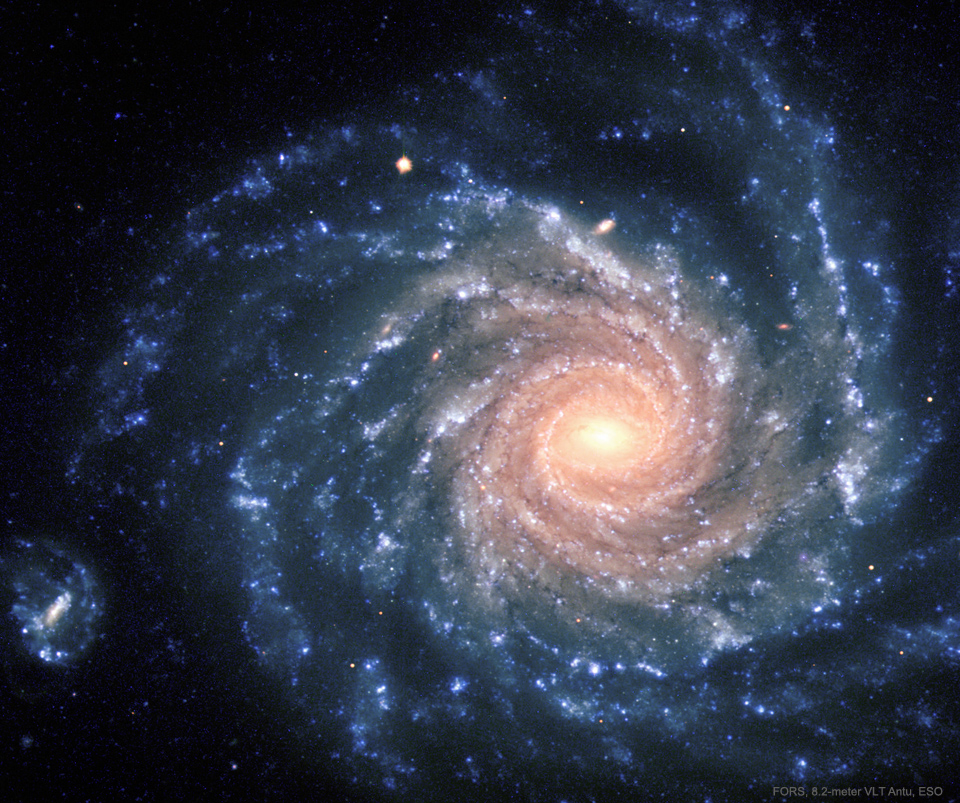2024年1月1日
NGC 1232: A Grand Design Spiral Galaxy
Image Credit: FORS, 8.2-meter VLT Antu, ESO
Explanation: Galaxies are fascinating not only for what is visible, but for what is invisible. Grand spiral galaxy NGC 1232, captured in detail by one of the Very Large Telescopes, is a good example. The visible is dominated by millions of bright stars and dark dust, caught up in a gravitational swirl of spiral arms revolving about the center. Open clusters containing bright blue stars can be seen sprinkled along these spiral arms, while dark lanes of dense interstellar dust can be seen sprinkled between them. Less visible, but detectable, are billions of dim normal stars and vast tracts of interstellar gas, together wielding such high mass that they dominate the dynamics of the inner galaxy. Leading theories indicate that even greater amounts of matter are invisible, in a form we don’t yet know. This pervasive dark matter is postulated, in part, to explain the motions of the visible matter in the outer regions of galaxies.
Free APOD Lecture: January 9, 2024 to the Amateur Astronomers of Association of New York
Tomorrow’s picture: moon ripples
NGC 1232: 宏伟的螺旋星系
影像提供: FORS, 8.2-meter VLT Antu, ESO
说明: 星系之所以令人着迷,除了它们具有美丽的外观之外,也因为它们具有不可见的内涵。由甚大望远镜之一所拍摄的宏伟螺旋星系NGC 1232,就是一个很好的例证。上面影像里的可见物质,绝大部分是数以百万计的亮星和黝黑的尘埃,以及它们所聚成、绕着星系核心打转的螺旋臂。而蓝色亮星所组成的疏散星团则散布在旋臂上,它们之间夹杂着由致密星际尘埃所聚成的尘埃带。此外,这个星系还有数十亿颗不显眼但可侦测的恒星及大量的星际气体,它们加总的巨大质量,主宰了星系核心区的动力学行为。不过现行的最可信的学说指出,星系还拥有更大量形态不明的不可见物质。之所有假设有这种弥漫的暗物质之存在,部分原因是要解释星系外围区可见物质的运动。
免费APOD讲座: 2024年1月9日,纽约业余天文学家协会
明日的图片: moon ripples







